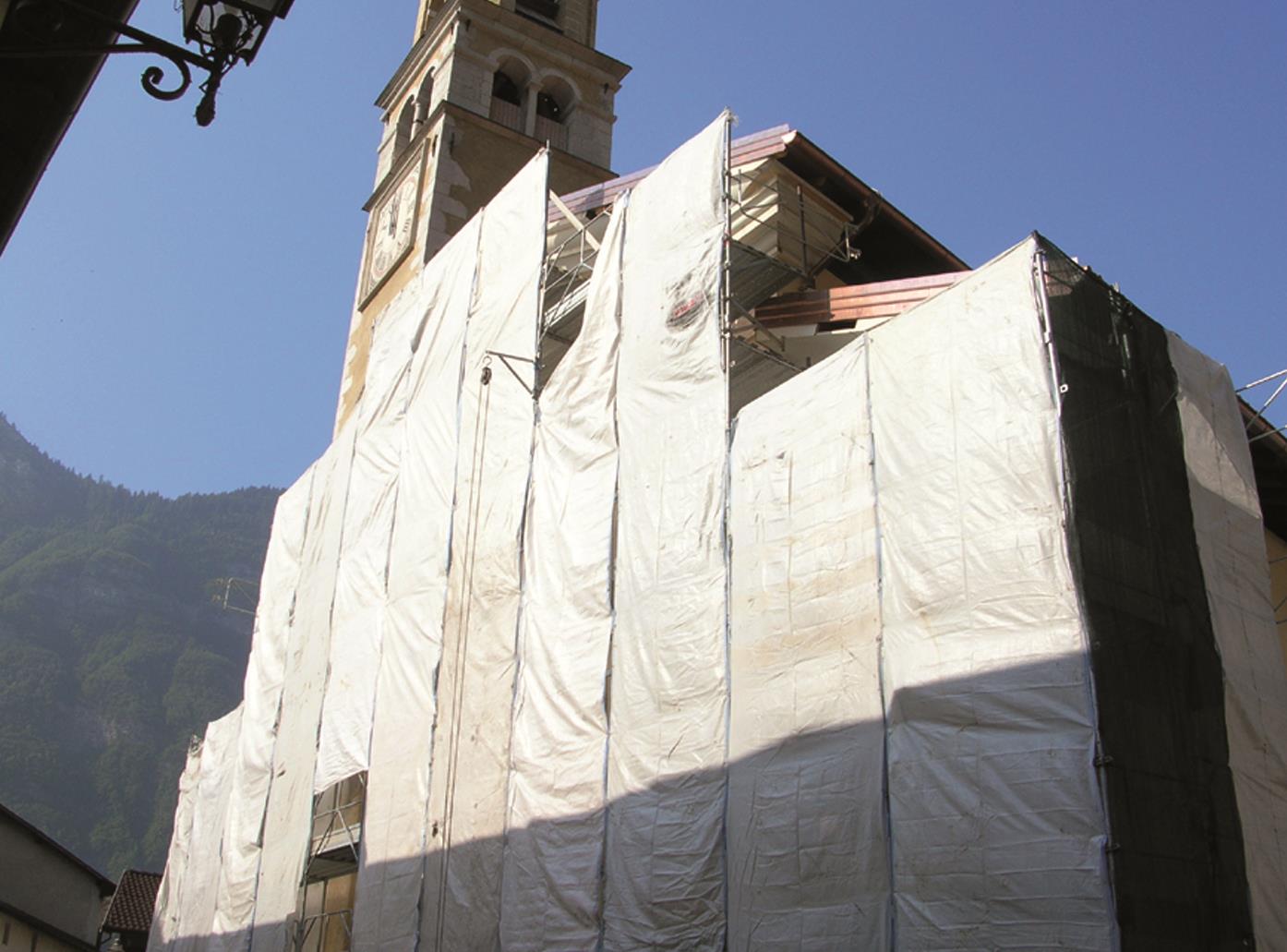Tracing the chronological history of this church, and explaining changes to the building through the centuries was not simple for lack of reliable documentation. The earliest records date back to 1474. In 1596 indirect entries refer to the existence of a document that mentions the consecration of the high altar in 1474. In 1585 we have the first descriptions of the church: it was a large vaulted nave with notable wall paintings. Between 1625 and 1627 a new bell tower was built (and still stands today), to the south of the church. Documents show that at this time the church had three naves, a presbytery and a sacristy, all the ceilings were vaulted.
From 1748 onwards the church was subject to continual bouts of restoration, completed in 1773 with the addition of two aisles, and the realization of a baroque decorative plan (executed in 1733, as is affirmed by an inscription on the central arch. In 1920 fragments of frescoes of fifteenth century origin were found on the counter façade and on the sides of the triumphal arch.
The church was consecrated again in 1933 on the site of the previous building. In the porch were two statues of the eighteenth century. Originally on the main altar of the old church these works are by the sculptor Antonio Giuseppe Sartori. Notable frescoes by Lucilius Grassi from the first half of the nineteenth century are to be admired inside, and there is an interesting statue In bronze by Joseph Romanelli.
DESCRIPTION OF THE PHASES OF RESTORATION
As part of the restoration of the church of San Giacamo in Grigno stratigraphic tests were performed on the on the vaults and on the covering over the nave of the church. These investigations revealed the presence of additional layers of whitewashing, under which was found a decoration in lime wash that extended over the entire surface of the ceiling vaults. Fake ribs were painted in tans and browns with reddish perimeter trims and, shadows enclosing a central area of grey- blue.
Therefore it was considered appropriate to remove old plaster in order to reveal the original decoration. The project for the intervention involved the use of small mechanical tools such as hammers, scrapers, spatulas, scalpels and small electrical appliances with rotary brushes and abrasive rubber heads. In areas where the removal of this layer of plaster proved particularly problematic, and only in cases where nothing was at risk to the original matter, it was decided to leave the residue of the old layer of plaster and integrate it with pictorial retouching at the final stage.
Appropriate consolidation of the plaster was subsequently executed by injecting pozzolanic mortar and making good the missing parts. With regard to the restoration of the fresco mounted on a canvas, it was necessary to strip the fresco from the support with great care.
Gallery


